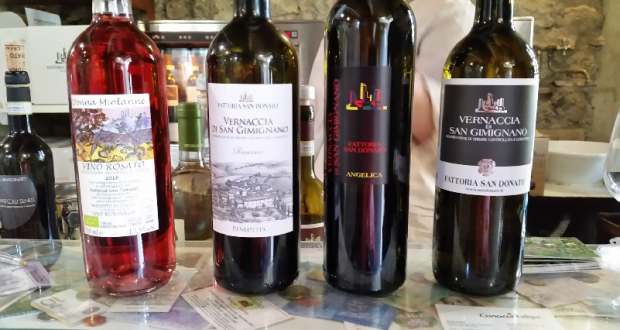How do you read a wine label? What are the real facts about the wine and what’s just marketing glitz? Is there any way to ensure that a wine is good from the label on the bottle? These are the most common questions asked by wine novices. If you don’t have access to the wine maker or at least a web site that describes the wine, the wine bottle label is probably the only thing left, so you need to know what’s important and what’s just a distraction. We’ve listed a number of terms that usually appear on a wine bottle label and for those of you with attention spans that are measured in milliseconds, we’ve ordered them from most commonly asked to least commonly asked.
Most of the terms below are either required by law or virtually demanded by the consumer who wants to know what is inside a bottle.
Winery Name (Or Sometimes a Brand Name)
The name on a wine label is usually the name of the Winery that makes the wine, but it can also be a brand name of a wine produced by a larger winery. For instance, Bronco Wine Company owns over 50 wine labels, perhaps the most famous of which is Charles Shaw Wines, otherwise known as “Two Buck Chuck”. Despite its notoriety however, Charles Shaw is not actually a winery at all but just a label for a recipe of wine produced by Bronco Wines. According to the TTB (the branch of the US government that regulates alcohol sales, the ever so creatively named Alcohol and Tobacco Tax and Trade Bureau), brand names must be clear and not misleading about the age, identity, origin or other characteristics of the wine. This really must mess with the creative marketers who rarely let something as trivial as fact stand in their way of a great story.
Type of Wine – Either a Varietal or Blend
Most wines produced and sold in supermarkets are Varietals meaning they have primarily one type of wine grape in them. In order to have the wine label call out a Varietal name as the type of wine, it must contain at least 75% of that grape. Other grapes can be used to enhance the flavor. In Europe and particularly in France, the region from where the wine comes is more important than the Varietal or Varietals from which it is made. Therefore regions like Bordeaux or Burgundy will often be named in the wine label instead of a Varietal like Merlot or Pinot Noir. If the wine label does not designate a Varietal, other terms can be used such as White Wine, Red Wine, Table Wine, Rose Wine. Table wines in particular connote bad quality wines but there are many wine makers that venture outside the norm when creating blends so that every characteristic of the grapes are balanced to achieve a great flavor. Many wineries create wine blends using the same Varietals as the Classic Bordeaux blends that are designated as Red Table Wines but are exceptional.
Read the rest of the article here:
Reading Wine Labels (Part 1): What Are Wineries Required to Print on Wine Labels?
Read more Winery-Sage posts on SNO
Winery-Sage is an online Winery Encyclopedia designed to help you compare wines, wineries, and regions by using a unique database. Cross-reference varietals and the wineries that produce them, as well as discover events sponsored by wineries and associations. We’re not here to sell you anything or pass you off to paid advertisers, just share the love for wine. Discover the world of wine at Winery-Sage.com.





